#kobold press
Text

Clockwork Magic by Marcel Mercado
66 notes
·
View notes
Text

Kobold Press, one of the largest DnD creators, is creating their own system due to the recently announced changes to the Open Gaming License (OGL 1.1). Above is the video announcement on Twitter. Here's the blurb from the website:
As Dungeons & Dragons moves toward the 50th anniversary of the game, foundational changes are afoot in the tabletop roleplaying game arena. While we wait to see exactly what shape the Open Gaming License might take in this new era, Kobold Press is also moving forward with some clear-eyed work on work on a new Core Fantasy tabletop ruleset: available, open, and subscription-free for those who love it: Code Name — Project Black Flag. To receive future announcements and to register to playtest this ruleset, please sign up using this form.
When the new Open Gaming License and an updated System Reference Document are made public, Kobold Press will review the terms and consider whether they fit the needs of our audience and our business goals.
The kobolds are looking forward to the continued evolution of tabletop gaming, and we aim to play our part in making the game better. Rest assured Kobold Press intends to maintain a strong presence in the tabletop RPG community.
The form to sign up that is mentioned above is located here: https://koboldpress.com/kobold-press-announces-new-core-fantasy-experiment/
This could easily move the needle on how WoTC goes forward with this plan, but no matter what I think they've lost a lot of trust with the community.
#kobold press#dnd 5e#dungeons and dragons#wotc#wizards of the coast#dnd open gaming license#dnd news#dnd ogl
347 notes
·
View notes
Text
7 Fantasy RPGs to fill the D&D-shaped Hole in your Life
So. It finally happened. Either Hasbro, or Wizards of the Coast, or someone else associated with Dungeons & Dragons finally did something so fucked-up that you've decided to swear it off entirely.
The problem is that for decades, there has been one obvious answer to the question of "What game with Dwarves, Longswords and Wizards in it should we play" and that was D&D, every time. Even their strongest rival in the past couple of decades was just an older version of D&D with a spit shine.
Now you find yourself adrift in a sea of possibility, with no signposts. There are names you've heard, but you have no idea which ones you'd actually be interested in, because you had always just assumed you'd be playing D&D until the heat death of the universe.
So let's take a look at a few games that want to fill that D&D-shaped hole in your gaming life, and examine what they're offering.
Disclaimer: I'm not covering the entire breadth and depth of the TTRPG industry here. I'm specifically going to be covering Fantasy RPGs that should appeal to D&D fans here. So if I didn't cover your favourite indie RPG, sorry. But there has to be a "First step" outside of the D&D bubble, and each of these games should fulfill that need.
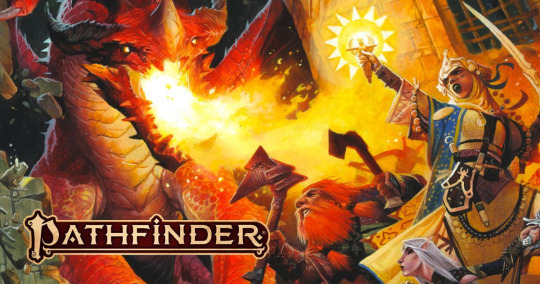
The Other "Kitchen Sink" Game: Pathfinder
If you can't bring yourself to keep playing the corporate game, but you still want something that offers as close to that gameplay experience as you can possibly get, your best bet at the time of this writing is probably Pathfinder 2nd Edition.
I say this as someone who very much did not vibe with the original Pathfinder, or its "D&D in space" sister product Starfinder. But at this point, I'd absolutely tell a newcomer to jump into Pathfinder 2E before I recommended they buy any WotC product.
To their credit, the 2nd Edition of Pathfinder does much more to, uh, find its own path by diverging from 3.5 edition and implementing new systems that take it into uncharted territory. The "Two Actions Per Turn" paradigm is often cited by its proponents as being a meaningful improvement over the 5E way of doing things.

The "TTJRPG": Fabula Ultima
One of the biggest success stories of the early 20's was Fabula Ultima from NEED Games in Italy. It came seemingly out of nowhere to win the ENnie Gold Award for Best Game of 2023. Since then it's become notoriously difficult to find in print, though it's still freely available as a PDF.
Fabula Ultima is a "TTJRPG," modelled after Japanese fantasy video games like Final Fantasy, Dragon Quest, Phantasy Star, Breath of Fire, etc. While it's firmly planted in the Fantasy genre, its gameplay will also very recognizable to fans of those types of games.
The major benefit of this conceit is that you can probably already picture how combat in FabUlt works in your mind: Two rows of characters take turns jumping and slashing at each other, or casting magical spells to harm, heal, or apply status conditions. There's no concept of "Spacing," but the game still manages to be mechanically intricate with lots of varied class abilities and status effects to apply.
D&D refugees looking for a game where you simply pick a class and fight some monsters, but aren't too particular about how they do that, will find a lot to love here. FabUlt leans much more heavily on storytelling mechanics than D&D does, so players who've been looking for something a bit more "Theater of the Mind" should be well taken care of here.

Final Fantasy Lancer: ICON
Like Fabula Ultima, ICON is a TTRPG that takes heavy inspiration from JRPGs, specifically tactical games like Final Fantasy Tactics and Tactics Ogre. It's from Massif Press, who also authored the surprise indie Mech combat hit Lancer.
And like Lancer, ICON is a game with two very distinct rulesets: Outside of combat, a "Fiction-first" narrative system inspired heavily by Blades in the Dark; In combat, a grid-based tactical skirmish game reminiscent of D&D 4th Edition. All backed by the gorgeous art of its author Tom Parkinson-Morgan, who also writes and illustrates the comic Kill Six Billion Demons.
ICON separates its "narrative" class system from its combat class system, giving each character two distinct character sheets that come into play at different times. Because those two systems don't have to cross over very much, each can be as intricate or as rules-light as it needs to be to promote the type of gameplay most appropriate for the situation.

The Old-School Gateway Drug: Shadowdark
If you ever took a few steps outside of the walled garden that is D&D in the past few years, you will likely have read or heard of the OSR, or "Old-School Revival/Renaissance." Proponents of the OSR are players who yearn for an older style of Dungeon Crawling Survival Horror game that hearkens back to the early days of D&D, before the players became akin to superheroes.
Shadowdark aims to be a game that bridges the gap to that style of gameplay, without being totally unfamiliar to players who only ever learned 5th Edition mechanics. It's "Old-School gaming, modernized."
Aside from simply being a modern take on a D20 fantasy game, it freshens up gameplay using a mechanic called the "Torch Timer." It turns light into a resource that dwindles in real time. This serves to elevate the tension of the game as every minute that passes is one less minute of light on your torch. And when the torches run out, well... You can probably guess what happens next.
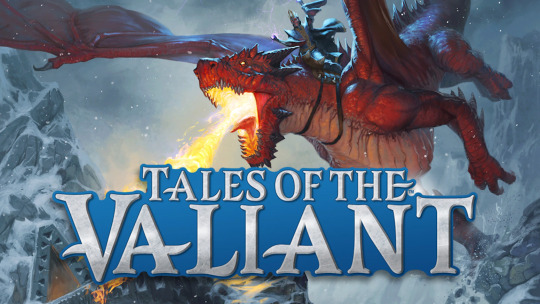
5th Edition with the Serial Numbers Filed Off: Tales of the Valiant
Tell me if you've heard this one before: Wizards of the Coast introduces sweeping changes to its "Open" license model, leading existing 3rd-party content creators to create their own version of an older ruleset to protect the viability of their backlog. It happened in the past, but what are the chances that happens a second time? Ha!
Well... It did happen again. This time, playing the role of the "Paizo" in this scenario is Kobold Press, who loudly declared that they were "Raising the Black Flag" in response. In order to ensure that there would always be a "Core Fantasy" ruleset that would remain compatible with their content, they announced Tales of the Valiant, which would essentially duplicate the 5th Edition ruleset with a bit of a spit shine, in much the same way that Pathfinder did for 3.5 Edition.
Tales of the Valiant will be the game for the D&D player who just wanted a rules refresh of 5th Edition, but also doesn't want to keep throwing money at the corporate hegemony. It should end up being "The 5E you can feel good about supporting," and that matters right now.
youtube
Matt Colville's Big Bet: The MCDM RPG
Kobold Press was not the only publisher of third-party D&D content to have a strong reaction to the OGL fiasco. Unlike Tales of the Valiant however, Matt Colville's response was to announce a fully new Fantasy RPG system, with no expectation of backwards compatibility with any edition of D&D.
MCDM's sights are firmly set on the "Post-Kitchen-Sink" future, and to that end their game is explicitly not trying to be the one game for every possible playstyle. It's Tactical, meaning you'll need a grid to play it on, and it's Heroic, meaning characters should feel powerful, and not like they're constantly one critical hit or failed trap-sensing check away from being decapitated.
This approach might seem like a massive risk considering how insanely powerful 5th Edition became at its peak. But a record-breaking crowdfunding campaign backed by over 30,000 people shows that there is at least an appetite for something new, and that there is a like-minded community of players ready and waiting to join you.

The Critical Role Game: Daggerheart
If the Kobold Press announcement was a shot across the bow, and the MCDM crowdfunder was a bomb dropped, then Daggerheart is a full-blown asteroid, streaking straight towards Wizards of the Coast HQ.
Daggerheart is an original Fantasy RPG from Darrington Press, the publishing arm of the Critical Role media company. That by itself should mean something considering how important CR is to the D&D brand, but there's more to talk about here. Though it superficially resembles D&D in a lot of ways, it has some extremely important differences. Namely, its use of "Powered by the Apocalypse" mechanics such as "Fail Forward" dice rolling and "No Initiative" combat.
While "PbtA" has become somewhat of a loaded term in the D&D community, Critical Role has an opportunity to overcome that stigma with the sheer force of their platform. I've made this case already in the past, but if they were to use their power to do for themselves what they did for 5th Edition, it would be the most significant threat to the Hasbro Hegemony to emerge since Pathfinder. Let alone taking just a slice, Daggerheart has the long-term potential to take the whole damn pie.
And more!
The games I've listed here are all theoretically capable of replacing the Corpo game as your "go-to" long-term game. Not all of them are fully playable as of this writing, but they all represent one possible future for the "Sword and Sorcery" RPG genre.
There are of course a whole plethora of other games out there beyond the limited scope of "Medieval Fantasy" that are just as valid and just as viable, if you're feeling a bit more adventurous.
If you're looking for something explicitly tactical like a miniature skirmish game, but still in the RPG genre, and you're willing to expand your choice of genre beyond Euro-centric Medieval Fantasy even further beyond ICON, you might be interested in Gubat Banwa or the aforementioned Lancer.
If you want a game that promotes a slightly more streamlined, less mechanically-intricate approach to combat while still giving you tons of monsters to kick the shit out of, you might want to check out the "Illuminated by LUMEN" family of games inspired by the games LIGHT and NOVA from Gila RPGs. It might even inspire you to write your own RPG!
If you're more interested in the Old-School Renaissance, you might want to check out Forbidden Lands, Dungeon Crawl Classics, Old-School Essentials, or MÖRK BORG.
If you like the idea of "Old-School Roleplaying" but are also willing to step outside of the fantasy genre into Sci-fi territory, you might be interested in Stars Without Number, its Cyberpunk sister product Cities Without Number, or Mothership.
Finally, if you just want a game that focuses on telling the best story rather than mindlessly killing monsters and acquiring loot, you might want to check out Blades in the Dark, Thirsty Sword Lesbians, Girl by Moonlight, Coyote and Crow, and many more Fiction-First games in the Powered by the Apocalypse and Forged in the Dark genres.
But most importantly: Just play more games! Don't just buy them, play them! The point of this whole exercise is to replace the monopoly with a plurality, for the sake of the health of the tabletop gaming industry.
Because the next time Hasbro lays off a bunch of WotC employees, there should be a much stronger, more diverse industry for them to land in feet-first. We should all want for the people who build the games we love to feel safe in their career choice. Not just for the sake of the ones who are already there, but for future prospective designers and artists who want to make their mark.
It should be viable to be a tabletop game designer outside of just making more D&D stuff forever, because as we've seen, it's not safe to assume that we can all just keep doing the same thing we've been doing and not get bit on the ass by it.
If we want that future, we have to take it into our own hands and build it ourselves. But if there's one group of people that knows about building something very big from very little, it's TTRPG players.
#ttrpg#icon rpg#icon ttrpg#mcdm#pathfinder#fabula ultima#kobold press#tales of the valiant#daggerheart
52 notes
·
View notes
Photo
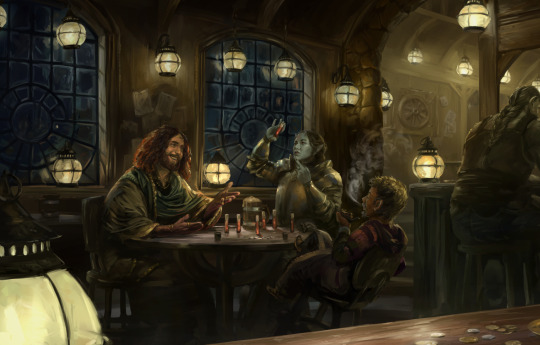


A few interior illos I did for Book Of Ebon Tides
431 notes
·
View notes
Text
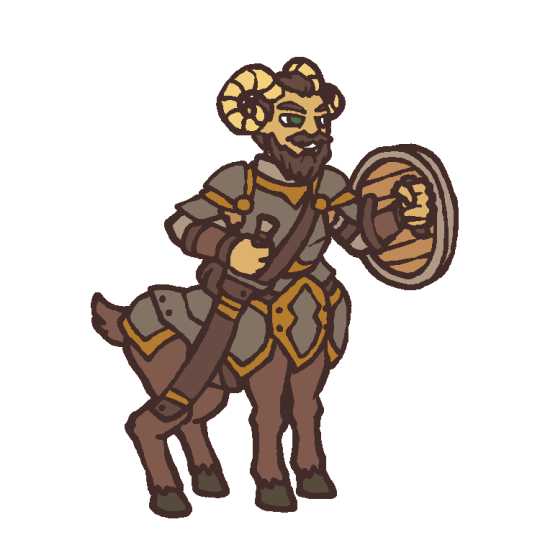





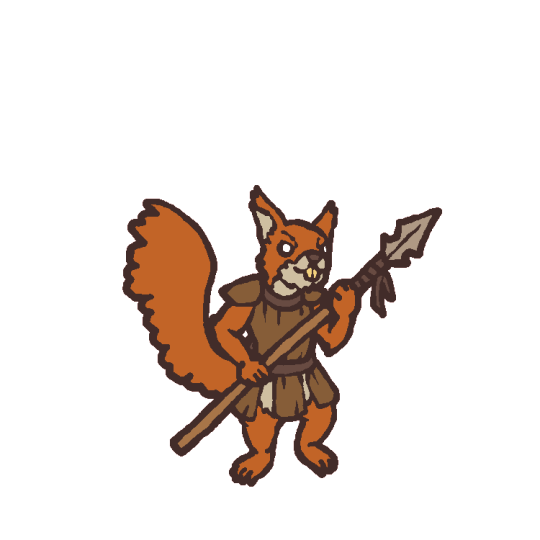
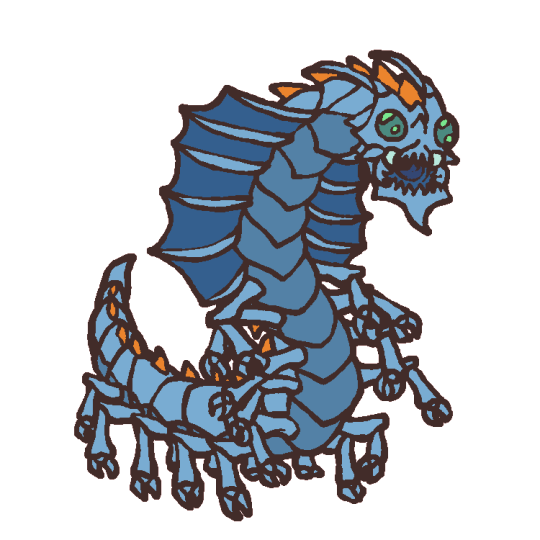

Denizens of Ysgard, including bariaur, ratatoskr, and a couple of remorhazes. The young remorhaz is actually one of the last Monster Manual creatures left that I haven't drawn.
#d&d#pathfinder rpg#d&d 5e#d&d characters#character portraits#paper minis#remorhaz#ratatosk#ratatosk warlord#kobold press#treant#razorvine blight#bariaur#wanderer#warrior#hunter#shaman
11 notes
·
View notes
Text
#tabletop rpg#ttrpg#dungeons and dragons#D&D#paizo#pathfinder#powered by the apocalypse#buried without ceremony#monster of the week#kids on bikes#kobold press
87 notes
·
View notes
Link
For the last several weeks, as rumors of Wizards of the Coast’s new version of the Open Game License began circulating among publishers and on social media, gamers across the world have been asking what Paizo plans to do in light of concerns regarding Wizards of the Coast’s rumored plan to de-authorize the existing OGL 1.0(a). We have been awaiting further information, hoping that Wizards would realize that, for more than 20 years, the OGL has been a mutually beneficial license which should not – and cannot – be revoked. While we continue to await an answer from Wizards, we strongly feel that Paizo can no longer delay making our own feelings about the importance of Open Gaming a part of the public discussion.
We believe that any interpretation that the OGL 1.0 or 1.0(a) were intended to be revocable or able to be deauthorized is incorrect, and with good reason.
We were there.
Paizo owner Lisa Stevens and Paizo president Jim Butler were leaders on the Dungeons & Dragons team at Wizards at the time. Brian Lewis, co-founder of Azora Law, the intellectual property law firm that Paizo uses, was the attorney at Wizards who came up with the legal framework for the OGL itself. Paizo has also worked very closely on OGL-related issues with Ryan Dancey, the visionary who conceived the OGL in the first place.
Paizo does not believe that the OGL 1.0a can be “deauthorized,” ever. While we are prepared to argue that point in a court of law if need be, we don’t want to have to do that, and we know that many of our fellow publishers are not in a position to do so.
We have no interest whatsoever in Wizards’ new OGL. Instead, we have a plan that we believe will irrevocably and unquestionably keep alive the spirit of the Open Game License.
As Paizo has evolved, the parts of the OGL that we ourselves value have changed. When we needed to quickly bring out Pathfinder First Edition to continue publishing our popular monthly adventures back in 2008, using Wizards’ language was important and expeditious. But in our non-RPG products, including our Pathfinder Tales novels, the Pathfinder Adventure Card Game, and others, we shifted our focus away from D&D tropes to lean harder into ideas from our own writers. By the time we went to work on Pathfinder Second Edition, Wizards of the Coast’s Open Game Content was significantly less important to us, and so our designers and developers wrote the new edition without using Wizards’ copyrighted expressions of any game mechanics. While we still published it under the OGL, the reason was no longer to allow Paizo to use Wizards’ expressions, but to allow other companies to use our expressions.
We believe, as we always have, that open gaming makes games better, improves profitability for all involved, and enriches the community of gamers who participate in this amazing hobby. And so we invite gamers from around the world to join us as we begin the next great chapter of open gaming with the release of a new open, perpetual, and irrevocable Open RPG Creative License (ORC).
The new Open RPG Creative License will be built system agnostic for independent game publishers under the legal guidance of Azora Law, an intellectual property law firm that represents Paizo and several other game publishers. Paizo will pay for this legal work. We invite game publishers worldwide to join us in support of this system-agnostic license that allows all games to provide their own unique open rules reference documents that open up their individual game systems to the world. To join the effort and provide feedback on the drafts of this license, please sign up by using this form.
In addition to Paizo, Kobold Press, Chaosium, Green Ronin, Legendary Games, Rogue Genius Games, and a growing list of publishers have already agreed to participate in the Open RPG Creative License, and in the coming days we hope and expect to add substantially to this group.
The ORC will not be owned by Paizo, nor will it be owned by any company who makes money publishing RPGs. Azora Law’s ownership of the process and stewardship should provide a safe harbor against any company being bought, sold, or changing management in the future and attempting to rescind rights or nullify sections of the license. Ultimately, we plan to find a nonprofit with a history of open source values to own this license (such as the Linux Foundation).
Of course, Paizo plans to continue publishing Pathfinder and Starfinder, even as we move away from the Open Gaming License. Since months’ worth of products are still at the printer, you’ll see the familiar OGL 1.0(a) in the back of our products for a while yet. While the Open RPG Creative License is being finalized, we’ll be printing Pathfinder and Starfinder products without any license, and we’ll add the finished license to those products when the new license is complete.
We hope that you will continue to support Paizo and other game publishers in this difficult time for the entire hobby. You can do your part by supporting the many companies that have provided content under the OGL. Support Pathfinder and Starfinder by visiting your local game store, subscribing to Pathfinder and Starfinder, or taking advantage of discount code OpenGaming during checkout for 25% off your purchase of the Core Rulebook, Core Rulebook Pocket Edition, or Pathfinder Beginner Box. Support Kobold Press, Green Ronin, Legendary Games, Roll for Combat, Rogue Genius Games, and other publishers working to preserve a prosperous future for Open Gaming that is both perpetual AND irrevocable.
We’ll be there at your side. You can count on us not to go back on our word.
Forever.
–Paizo Inc
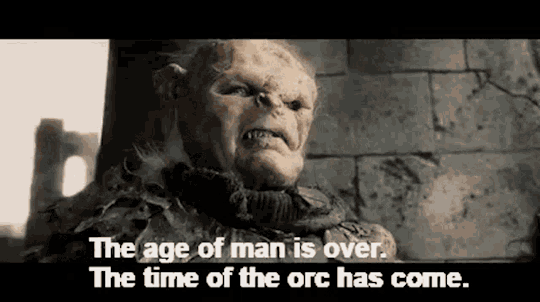
#OGL#ORC#RPGs#TTRPGs#Paizo#Kobold Press#Chaosium#Green Ronin#Legendary Games#Rogue Genius Games#WotC#animated gif#reaction gif
104 notes
·
View notes
Text
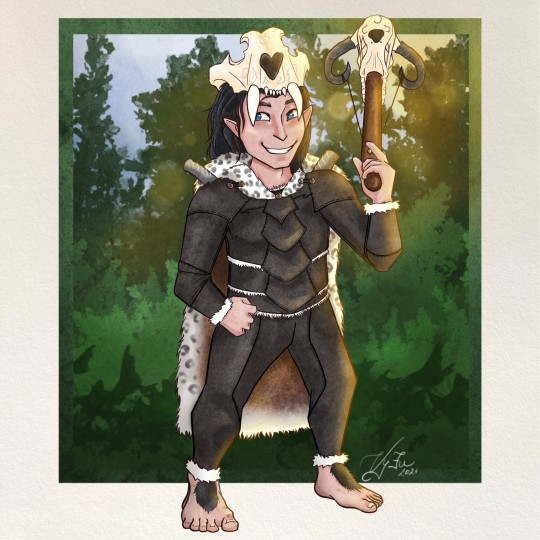
Forr'est Pawson, winterfolk halfling ranger 🐾
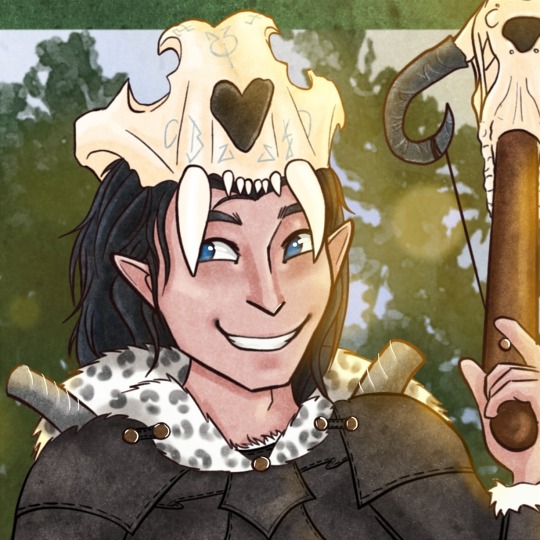
As a new addition to my dnd character practices, I bring you my second ever dnd character, the young and ambitious Forr'est Deep Wildfur Pawson from the Wildfur tribe.
He was born in the rigid and wild forests on the savage edges of Björnrike's snowy mountains in the north-east. Together with his twin sister, Cattoah were part of one of the leading families of the clan and the grew up happily in the Wildfur tribe lead by their uncle Chestag Wildfur.
As the young Forr'est grew, his time also came to prove himself alone in the wild and earn his mark of the tribe, a tattoo on the arm containing the words "Bestia virtute dirigit!/The power of the beast guides us!”. The winters are harsh and unforgiving in the great North, and Forr'est is grimly familiar with it as it took the twins' parents away from them. Food is scarce and the predators are way too hungry to back down from a fight.
As Forr'est tracked down a thin snow elk and had it in his aim, he noticed a female snowcat also slowly gaining on the same prey as he did. With the fear and determination to bring back home food and trophy of his hunt, he waited until the elk's killer blow was dealt by the huge snowcat and that is when the young halfling made his move on the predator. After the successful fight and preparation of the elk meat, snowcat skull and skins, he heard a little yelp in the underbushes of the snowy forest. There he found and injured and terribly hungry male snowcat cub, the fallen females lone offspring. Forr'est did not want to leave the poor cub alone in the winter and dooming it to a certain death, so together with the trophies and meat, he brought Bygul (named after the goddess Freya's cat), the young snowcat with him.
Bygul grew up to be one of the biggest snowcat males and became a trusted companion to the young ranger. After Forr'est earned his mark and with his wit and bravery he started gaining quite a lot of supporters as the potential heir to the clan leader, as the nephew of Chestag. This was definitely against the will of Macrow Wildfur, brother of Chestag, who found the young Forr'est too reckless and childish to even try to take the position instead of him. As the leader's health kept declining, the decision was made that the heir to the post will be determined on the next Fire Meeting, a celebration and tribe meeting happening every 4 years.
Half a year before the next tribe gathering, Forr'est and his sister Cattoah, accompanied by the steadily growing Bygul, departed towards Trollheim for Cattoah to pursue her bard passions the great island-city of Skaldholm. They promised to be back to the Fire Meeting and the twins said their first ever goodbyes to eachother as Cattoah boarded the ship towards the Bard school of Skaldholm.
#digital art#art#digital illustration#procreate#artwork#digital drawing#illustration#dnd#dnd oc#dnd campaign#dnd character#dnd art#dungeons and dragons#dungeons and drawings#artists on tumblr#ranger#dnd e5#halfling#kobold press#midgard#original character#character art#dnd charcter art#he is just a little guy#bg3
18 notes
·
View notes
Text
Kobold Press announces that after their current Kickstarter projects are finished they’ll be making their own open fantasy RPG
Link to tweet, while it is a pic the text is in the replies.
D&D Beyond finally tweets that they know we have questions about the OGL and will be releasing more info soon
Link
MCDM have also been saying for a while now that their own RPG is something they’re wanting to move forward on and have had meetings already, I don’t have a link for this but it’s in the VOD from three ish days ago on Matt Colville’s twitch channel.
Unrelated pic:
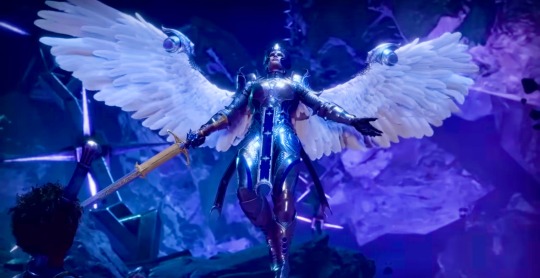
143 notes
·
View notes
Text
Kobold Press announced today they’re going to be making their own fantasy tabletop ruleset. This is a fairly big thing — KP is one of 5E’s biggest 3rd party content creators. They also were commissioned to write the original 5E Tyranny of Dragons adventure (5E’s first adventure books!) and more recently did some work on Ghosts of Saltmarsh (which is the only book I’ve picked up from WOTC that got me really excited to run it even when I had no intention to.)
The OGL isn’t mentioned by name in their blog post, but it’s pretty clear that their new “available, open, and subscription-free“ system is being announced now because of it.
This next part is speculation on my part, but I think this is a pretty clear confirmation that even bigger 3rd party publishers are not getting a sweetened deal when it comes to content. I still haven’t heard if any of the big actual plays (”actual plays”) have made statements about the OGL leak, so the ball is in the air about media vs publishing organizations, but the scope of how far this OGL nonsense will go is starting to become more clear.
KP’s storefront is very heavily weighted to 5E content, so the announce of their own core fantasy system is a big shift and not one easily walked back. It’s a commitment to breaking away that makes me wonder what WOTC has said behind closed doors around the leak.
https://koboldpress.com/raising-our-flag/
82 notes
·
View notes
Text

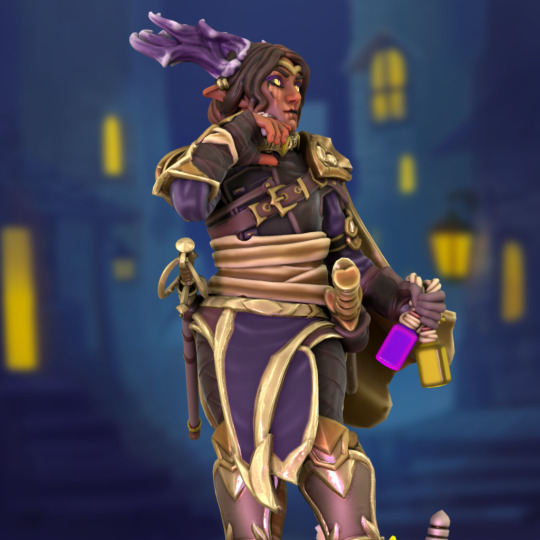


maybe I just like my own heroforge designs too much. anyway here’s Nicabre Blackthorn!! He is the ultimate wife guy he’s only a little evil
#oc: nicabre#shadow fey#midgard 5e#kobold press#dnd5e#dnd character#heroforge#dnd oc#cas blorbos#my ocs#he is also trans and sexy btw
36 notes
·
View notes
Text

Waste of Chaos Cover Art by Marcel Mercado
7 notes
·
View notes
Text
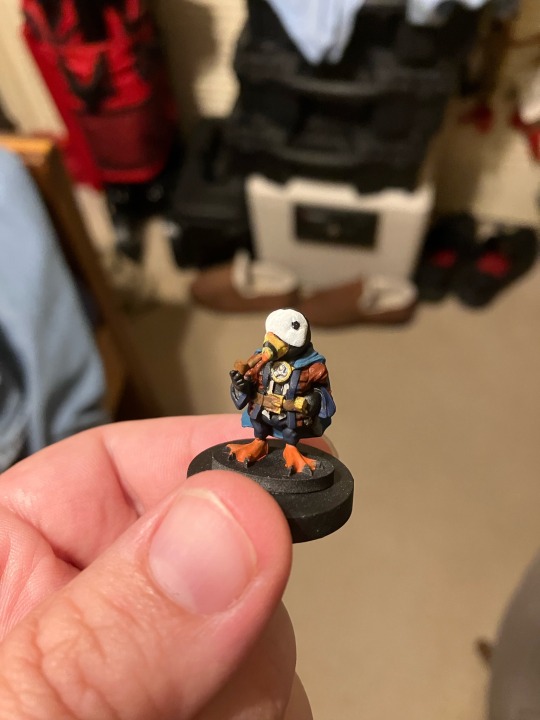

Painted a puffinkin. It’s in Kobold Press’s Tome of Beasts 3. The miniature was made by Effincool Miniatures.
#miniature painting#Effincool Miniatures#tome of beasts 3#kobold press#puffin#puffinfolk#puffinkin#not sure what they call themselves
16 notes
·
View notes
Text
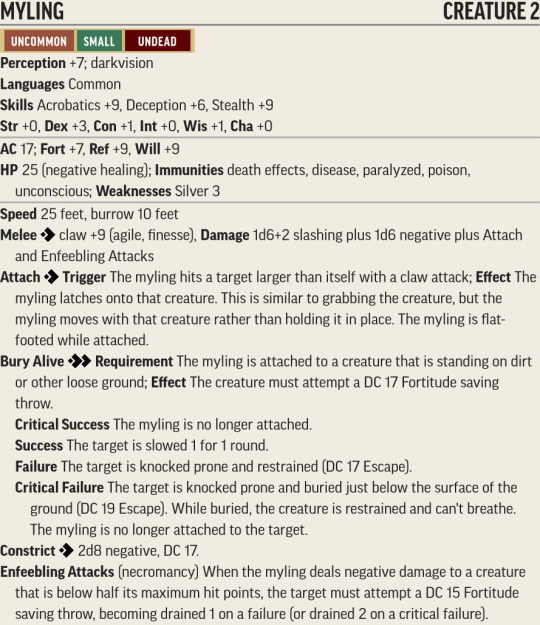
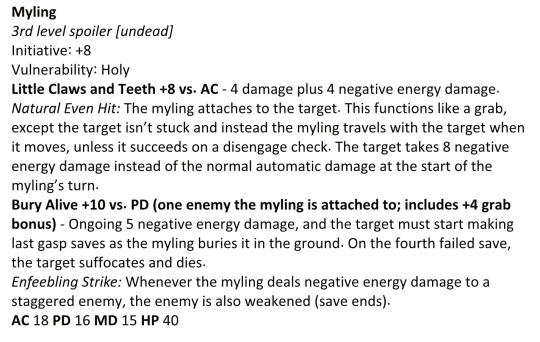
Another early Tome of Beasts appearance, this was requested by another of my Patreon backers. The 13th Age version is designed for the 2nd Edition playtest material, but at this level in particular the numbers are pretty close to similar, so it can be used with 1st edition 13th Age without problem. If you'd like to make your own monster requests, you can back my Patreon to add your voice!
Mylings are small undead, the souls of those who died of abandonment or exposure, most often children. Even the rare adult who becomes a myling shrinks, reduced in size until they appear child like. A myling is driven to try and seek burial, but their understanding of it is broken and twisted by undead, and instead they will climb onto creatures that they lure close enough and cling on desperately. While attached, they will demand the creature carry them to open ground of some kind, biting viciously if refused. Upon open ground they will suddenly become unbearably heavy, dragging the person carrying them down into the ground, burying them in the dirt where they will suffocate.
A lone myling will exhibit traces of their living personality; babbling about their favorite toys, festivals, or people, or singing songs and making small games. When a person approaches, the myling will hide its dead face and usually cry or call for help to try and lure a would-be rescuer closer.
Inspired by the Tome of Beasts 1. This post came out a week ago on my Patreon. If you want to get access to all my monster conversions early, as well as access to my premade adventures and other material I’m working on, consider backing me there!
Pathfinder 2e
Myling Creature 2
Uncommon Small Undead
Perception +7; darkvision
Languages Common
Skills Acrobatics +9, Deception +6, Stealth +9
Str +0, Dex +3, Con +1, Int +0, Wis +1, Cha +0
AC 17; Fort +7, Ref +9, Will +9
HP 25 (negative healing); Immunities death effects, disease, paralyzed, poison, unconscious; Weaknesses Silver 3
Speed 25 feet, burrow 10 feet
Melee claw +9 (agile, finesse), Damage 1d6+2 slashing plus 1d6 negative plus Attach and Enfeebling Attacks
Attach [1 action] Trigger The myling hits a target larger than itself with a claw attack; Effect The myling latches onto that creature. This is similar to grabbing the creature, but the myling moves with that creature rather than holding it in place. The myling is flat-footed while attached.
Bury Alive [2 actions] Requirement The myling is attached to a creature that is standing on dirt or other loose ground; Effect The creature must attempt a DC 17 Fortitude saving throw.
Critical Success The myling is no longer attached.
Success The target is slowed 1 for 1 round.
Failure The target is knocked prone and restrained (DC 17 Escape).
Critical Failure The target is knocked prone and buried just below the surface of the ground (DC 19 Escape). While buried, the creature is restrained and can't breathe. The myling is no longer attached to the target.
Constrict [1 action] 2d8 negative, DC 17.
Enfeebling Attacks (necromancy) When the myling deals negative damage to a creature that is below half its maximum hit points, the target must attempt a DC 15 Fortitude saving throw, becoming drained 1 on a failure (or drained 2 on a critical failure).
13th Age
Myling
3rd level spoiler [undead]
Initiative: +8
Vulnerability: Holy
Little Claws and Teeth +8 vs. AC - 4 damage plus 4 negative energy damage.
Natural Even Hit: The myling attaches to the target. This functions like a grab, except the target isn’t stuck and instead the myling travels with the target when it moves, unless it succeeds on a disengage check. The target takes 8 negative energy damage instead of the normal automatic damage at the start of the myling’s turn.
Bury Alive +10 vs. PD (one enemy the myling is attached to; includes +4 grab bonus) - Ongoing 5 negative energy damage, and the target must start making last gasp saves as the myling buries it in the ground. On the fourth failed save, the target suffocates and dies.
Enfeebling Strike: Whenever the myling deals negative energy damage to a staggered enemy, the enemy is also weakened (save ends).
AC 18 PD 16 MD 15 HP 40
#pathfinder 2e#13th age#homebrew#my homebrew#monster#undead#tome of beasts#kobold press#pathfinder level 2#13th age level 3#long post
13 notes
·
View notes
Text
Since it's well known that Hasbro/WOTC doesn't read survey results, we should all ask them to do something silly in the new OGL survey. Something like:
"To regain my trust - and to prove that you care about my opinion - please make a new post on the official WOTC website (NOT DDB) that only says the word "shnuffle-fluff". Thank you.
#boycott wotc#opendnd#ttrpg podcast#ttrpg community#dnd stuff#dnd shenanigans#d&d#paizo#kobold press#ogl 1.0a#ogl 2.0#wizards of the coast#we're all in this together#we're all mad here#dungeons and dragons#dungeons and memes#dungeons and dungeons#am i doing this tag thing right?#ttrpgfamily#ttrpg stuff#indie ttrpg#ttrpg#open gaming license#ORC#the time of ORC is now#table top rpg#table top role playing game#table top games#hasbro#have a blessed day
54 notes
·
View notes
Text
Today
Paramount twitter account announced live action series based on Dungeons & Dragons... and got spammed with people making it very clear they’re gonna boycott it if Wizards of the Coast and Hasbro won’t ensure perservation of OGL 1.0a
Kobold Press, biggest publisher of 5e third-party content announced they’re fufilling their kickstarters and then will make their own game ruleset free of use and not attached to any OGL, basically recreating events that lead to birth of Pathfinder a.k.a. the very thing OGL 1.1 was supposed to prevent
Legal Eagle, lawyer youtuber with near 3 millions followers, respont to Matt Collville’s twitter thread about OGL clusterfuck with “Can we chat?”
Paizo, publishers of Pathfinder, just announced Third Party Kon - a convention to celebrate and promote 3rd party Pathfinder publishers. I assume “Chad Kon” name was taken.
I really do not want to be in shoes of Hasbro and WotC executives right now
74 notes
·
View notes